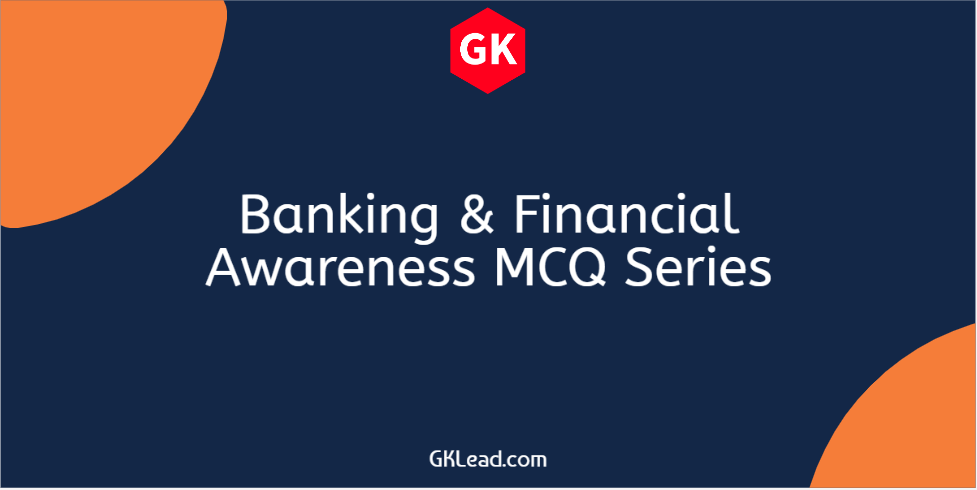Banking & Financial Awareness MCQ Set-4
Find out the most important Banking Awareness MCQ for IBPS PO, SBI PO, IBPS RRB, Insurance examinations and various other competitive examinations of BFSI sector in India.
Q.1 In India, the system of decimal coinage was introduced on:
A. 15th August, 1947
B. 26th January, 1950
C. 1st April, 1957
D. 1st April, 1976
Answer: C. 1st April, 1957
Note: India changed from the rupee, anna, pie system to decimal currency on 1 April 1957.
Q.2 Reverse repo, a tool used by the RBI to:
A. Inject liquidity
B. Absorb liquidity
C. Increase the liquidity within the banking system
D. To keep liquidity at one level
Answer: B. Absorb liquidity
Note: Reverse Repo Rate is defined as the rate at which the Reserve Bank of India (RBI) borrows money from banks for the short term. It is an important monetary policy tool employed by the RBI to maintain liquidity and check inflation in the economy.
Q.3 What is Repo Rate?
A. It is a rate at which RBI sells government securities to banks
B. It is a rate at which RBI buys government securities from banks
C. It is a rate defined by RBI for interest on deposit
D. None of these
Answer: B. It is a rate at which RBI buys government securities from banks
Note: Repo rate is the rate at which the central bank of a country (Reserve Bank of India in case of India) lends money to commercial banks in the event of any shortfall of funds.
Q.4 Which of the following is not a function of RBI?
A. Maintaining forex
B. Deciding bank rate, CRR, SLR from time to time
C. Prescribing the capital adequacy ratio
D. Opening savings account for the public
Answer: D. Opening savings account for the public
Q.5 Consider the followings
I. Bank Rate Policy
II. Open Market Operations
III. Devaluation of currency
Which of the above is a fiscal measure?
A. Only I
B. Only II
C. Only III
D. Both I & II
Answer: C. Only III
Q.6 Which among the following would result in fall of asset price?
A. Low liquidity in the economy
B. High liquidity in the economy
C. RBI increasing reverse repo rate
D. RBI allowing more baking players
Answer: A. Low liquidity in the economy
Answer: Low liquidity in the economy or a liquidity crisis is a financial situation characterized by a lack of cash or easily-convertible-to-cash assets on hand across many businesses or financial institutions simultaneously.
Q.7 The full form of BSR in banking is:
A. Basic Schedule of Rates
B. Basic Selling Rate
C. Bank’s Selling Rate
D. Basic Statistical Return
Answer: D. Basic Statistical Return
Note: BSR Code, short form of Basic Statistical Return Code, is a seven-digit code provided to all the registered Indian banks by the RBI. While the first three digits identify the bank, the following four digits identifies the bank branch.
Q.8 Bank rate policy, open market operations, variable reserve requirements and statutory liquidity requirement employed by RBI as measure of credit control are classified as:
A. Qualitative method
B. Quantitative method
C. Fiscal method
D. None of these
Answer: B. Quantitative method
Q.9 Which of the following would happen if RBI raises the rank rate?
A. Increase in lending rate
B. Decrease in lending rate
C. Increase in supply of money in the market
D. None of these
Answer: A. Increase in lending rate
Note: Bank rate is the rate charged by the central bank for lending funds to commercial banks. If the bank rate is raised, its immediate effect is to cause an increase in bank’s deposit and lending rates.
Q.10 If Repo rate is increased by RBI, which among the following would happen?
A. Increase in rates applicable to loans
B. High demand for loan in the market
C. Increase in money supply in the market
D. None of these
Answer: A. Increase in rates applicable to loans
Note: Repo rate is the rate at which the central bank of a country (Reserve Bank of India in case of India) lends money to commercial banks in the event of any shortfall of funds. Increase in repo rate makes borrowing from the RBI more expensive for commercial banks and this can lead to increase in rates applicable to loans.
List of Banking & Financial Awareness MCQ sets from GKLead.com
- Financial Awareness GK MCQ Set-1
- Financial Awareness GK MCQ Set-2
- Financial Awareness GK MCQ Set-3
- Financial Awareness GK MCQ Set-4
- Financial Awareness GK MCQ Set-5
- Financial Awareness GK MCQ Set-6
- Financial Awareness GK MCQ Set-7
- Financial Awareness GK MCQ Set-8
- Financial Awareness GK MCQ Set-9
- Financial Awareness GK MCQ Set-10
- Financial Awareness MCQ Set-11
- Financial Awareness MCQ Set-12
- Banking Awareness MCQ Set-13
- Banking Awareness MCQ Set-14
- Banking Awareness MCQ Set-15
- Banking Awareness MCQ Set-16
- Banking Awareness MCQ Set-17
- Banking Awareness MCQ Set-18
- Banking Awareness MCQ Set-19
- Banking Awareness MCQ Set-20

